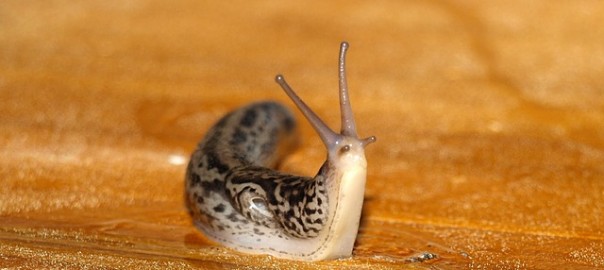S
Because gardening is an extremely popular pastime among pensioners, most of them have an almost pathological hatred of slugs – yet a closer look at these land molluscs reveals a complex and fascinating story.
The majority of British slugs come from Wisley, where the RHS harvests them each spring for distribution to gardens throughout the UK, with orange slugs confined to the south of England and their black counterparts spread throughout the rest of the country. A long-standing and highly successful selective breeding programme has enabled the RHS to develop tartan slugs for Scotland, slugs allergic to leeks for Wales and slugs with the ability to ride a large motorbike for the Isle of Man.
Slugs are mainly nocturnal and will travel some 300 yards (274 metres) during the course of a night as they forage for their food. They are particularly fond of hostas, dahlias, dumplings and éclairs, though the rare carnivorous slug, Pulmonata omophagum, will consume mayflies, frogs and occasional coal merchants.
Mating takes place during the autumnal slug rut, when the males fight for the most fertile females, sometimes laying individual slime trails toxic to other males, but more often digging booby-trapped pits in leaf mould or shooting rivals with small calibre carbines.
Slugs also form an important part of the diet of birds like the thrush, blackbird and lesser spotted slugpecker, while the French and Italians consider them a seasonal delicacy in dishes such as Boeuf Sluganoff, Slug Tartare and panna cotta.

